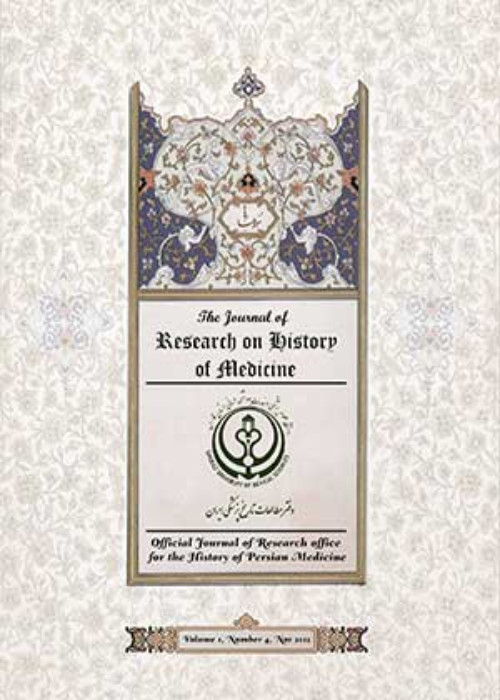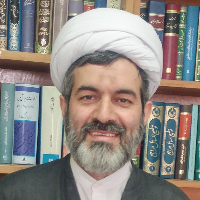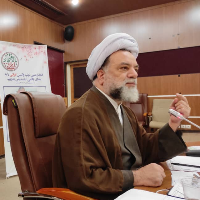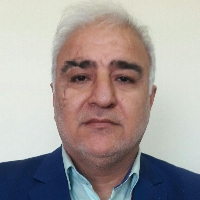Problems and Injuries of Horse Larynx and Voice Based on Veterinary Texts of the Islamic Civilization Period
Author(s):
Article Type:
Research/Original Article (دارای رتبه معتبر)
Abstract:
In the lexicographic texts as well as in veterinary resources and specialized books on horses, the Islamic civilization period has focused on the types of sounds heard from horses; the concept of sounds has been explained as well. Exposure of horses to some infectious diseases affects their larynx in such a way that this consequently changes the animals’ sound. Laryngeal problems in horses have been identified in ancient veterinary medicine by examining or hearing how the horse whines. The methods of identifying laryngeal problems and changes in the sound of the infected horses have been mentioned in ancient veterinary and specialized horse books in detail (FARASNAMEH- BEITAREHNAMEH, etc.). The purpose of this study was to conceptually obtain and classify the sounds of an infected horse followed by identifying its laryngeal problems that altered its natural sound.This is a qualitative research article used to describe and document the analysis methods. Using the designed vocabulary keyword, references were searched in the veterinary, and some other medical literature resources, followed by employing various stages of content analysis method.
Findings
Horses produce various sounds that include: Hamhameh, Sahil, Wahvaheh, Rahraheh, Shakhir, Nakhir, Karir, Dhabh, etc. For example, Sahil is divided in two: Salsaleh and Jaljaleh. For each of these voices, the meaning has been mentioned in the respective books. While infected, the animal’s voice is altered due to damage to the larynx, a vital member of the horse’s sound production. This impairs the horse’s communication with the rider or trainer.The findings showed that during the period of Islamic civilization, special attention was paid to horses. A variety of sounds produced by the animals were named, and their meanings were explained. Other unrelated Larynx problems also causing altered sounds due to laryngeal injuries were considered as independent illnesses, which they can be documented and read afterward.In conclusion, this study provides a comprehensive description of the identification and interpretation of sounds produced by horses in the history of the Islamic era. Also, further research in this field can determine the capability of veterinary knowledge in the Islamic regions more than before.Keywords:
Language:
English
Published:
Journal of Research on History of Medicine, Volume:9 Issue: 3, Aug 2020
Pages:
217 to 228
magiran.com/p2170287
دانلود و مطالعه متن این مقاله با یکی از روشهای زیر امکان پذیر است:
اشتراک شخصی
با عضویت و پرداخت آنلاین حق اشتراک یکساله به مبلغ 1,390,000ريال میتوانید 70 عنوان مطلب دانلود کنید!
اشتراک سازمانی
به کتابخانه دانشگاه یا محل کار خود پیشنهاد کنید تا اشتراک سازمانی این پایگاه را برای دسترسی نامحدود همه کاربران به متن مطالب تهیه نمایند!
توجه!
- حق عضویت دریافتی صرف حمایت از نشریات عضو و نگهداری، تکمیل و توسعه مگیران میشود.
- پرداخت حق اشتراک و دانلود مقالات اجازه بازنشر آن در سایر رسانههای چاپی و دیجیتال را به کاربر نمیدهد.
دسترسی سراسری کاربران دانشگاه پیام نور!
اعضای هیئت علمی و دانشجویان دانشگاه پیام نور در سراسر کشور، در صورت ثبت نام با ایمیل دانشگاهی، تا پایان فروردین ماه 1403 به مقالات سایت دسترسی خواهند داشت!
In order to view content subscription is required
Personal subscription
Subscribe magiran.com for 70 € euros via PayPal and download 70 articles during a year.
Organization subscription
Please contact us to subscribe your university or library for unlimited access!





